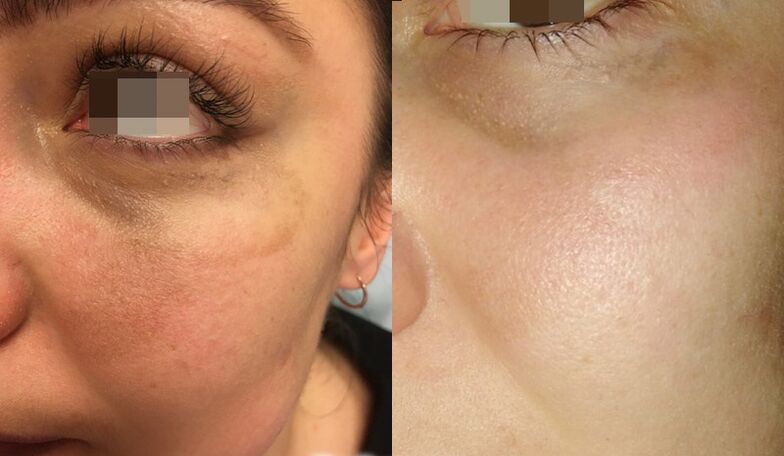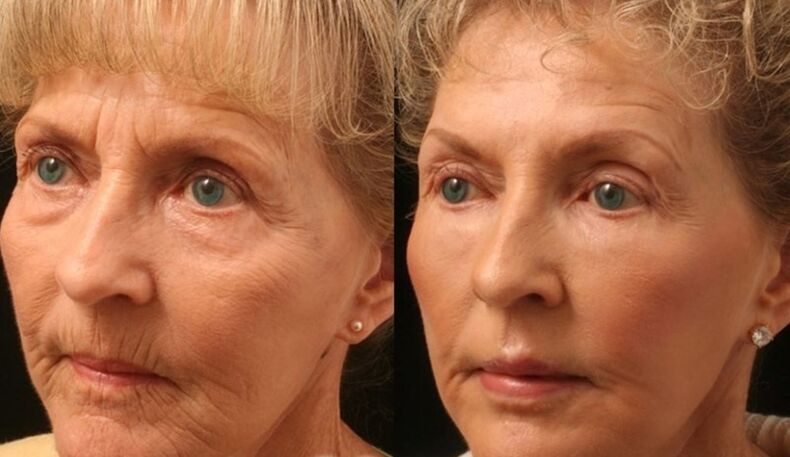
Who doesn't dream of young, beautiful and healthy skin? Unfortunately, your aging is an inevitable process. With age, elasticity is lost, pores enlarge, wrinkles and age spots appear. How to deal with it and without surgery is it possible?
One of the most effective options is fractional laser thermolysis. This is a non-surgical rejuvenation procedure that can solve a wide range of age-related and aesthetic problems, including smoothing out wrinkles and correcting scars.
How it works?
The photothermolysis procedure is based on the directed action of a laser beam, divided into several hundred of the best beams (the so-called fractions, hence the name). When they reach the target area of the skin, they cause small, strictly controlled temperature damage.
In response to these microtraumas, a natural regeneration process begins. There is an increase in the production of collagen - the protein responsible for skin tone and elasticity. The damaged layer is completely renewed. As a result - a pronounced rejuvenating effect, which is mainly obtained due to the activation of our body's natural internal resources.
Indications for fractional thermolysis
With this procedure, you can:
- smooth fine wrinkles;
- improve skin tone, make it more elastic;
- correct relief: narrow pores, remove traces of acne (post-acne), small stretch marks, scars after burns or cuts and other scar defects;
- lighten pigmentation, melasma (including age-related ones);
- perform a complete laser peeling - from superficial to total resurfacing.
In general, fractional thermolysis is a universal technique, indicated for patients of any age and considered the ideal option for those who want to obtain a rejuvenating effect, but are not yet ready to go to a plastic surgeon. It is permissible to work both on the face, including the delicate area of the eyelids and the skin around the eyes, and on the body – for example, on the neck, décolleté or on the hands.

what devices are there
Photothermolysis is performed using various CO2 and erbium lasers, two of which need special attention:
- Fraxel - has long been a leader in its category, and its own name has become a household name for the fractional rejuvenation procedure. It is now considered obsolete, although quite effective. It has several varieties (re: store, re: fine, re: pair) designed to work with different types of skin and at different depths.
- Mixto is a new generation laser and the "gold standard" of today. It differs from Fraxel in wavelength and also uses a special beam trajectory. Therefore, in all aspects, it surpasses its eminent predecessor: the procedure becomes more comfortable and safe, fewer sessions are needed and recovery is faster.
There are also several analog devices, mostly of Asian origin. They may be similar to Fraxel and Mixto in terms of principle of action, but are always inferior to them in safety, as they do not have precise settings for fractionation, intensity and depth of beam penetration.
How is the procedure
The session begins with a consultation with a beautician, where indications and other nuances are specified. No special training is required, so you can go directly to laser work:
- The first step is to clean your skin. An anesthetic (usually a lidocaine-based gel) is then applied to the target area.
- Both the patient and the esthetician wear special glasses to protect their eyes from accidental laser impact.
- The doctor then adjusts the device - sets penetration depth, joules power, pulse rate and other parameters. They are selected depending on the issue that needs to be resolved.
- Then, the beautician slowly drives the handle over the desired area of skin, providing it with the same fractions of light. This can be quite uncomfortable (depending on the individual's sensitivity to pain), but it is generally tolerable - most often patients describe their sensations as a slight tingling or burning sensation.
- The entire procedure, excluding the preparation, takes about 20 minutes, the exact time depending on the size of the treated area. Immediately upon completion, a soothing cream is applied to the face. You can go home and return to your normal routine with minimal restrictions.
How long does rehabilitation take after fractional thermolysis and how to take care of your skin during this time?
Up to 24 hours after the session, redness remains on the face, sometimes a slight swelling. It's the same thing that happens when a person is slightly sunburned. Don't be afraid, this is a natural reaction that signals the release of the rejuvenation mechanism.

The next day, characteristic brown spots appear. And on the third day, another indicator of the changes that have started appears - the micro-exfoliation of the skin (the exfoliation of old particles from the surface), which, however, passes very quickly. Also, for 1-2 weeks after the session, tanning can persist, ie the tanning effect.
There are few post-procedural restrictions, but it is extremely important to observe them, otherwise, you run the risk not only of not obtaining the desired effect, but also of facing complications:
- For 2-3 weeks, you cannot sunbathe, including in the solarium, as well as go to the bath/sauna (on the eve of the session, you can). At the same time, the fractional thermolysis itself is only carried out during the period without active sun.
- Moisturizing cosmetics (a light cream that does not clog the pores) should be applied to the treated area for the first few weeks.
- It is imperative to protect the treated skin from strong mechanical stresses. Until complete healing, any peeling and exfoliating creams with acids are prohibited. In no case should you peel scales, scratch or intensely rub the area where laser thermolysis was performed.
The rejuvenating effect builds and peaks within a month. To obtain a complete result with the Fraxel laser, in most cases a course of 3-6 procedures is required. Mixto handles minor defects in 1 session, with the most severe - in 2-3. The interval between them is several weeks so that the skin has time to fully recover.

The final result does not have a "status of limitations", but it is logical that over time, under the influence of age and external factors, the skin condition will worsen.
Contraindications, complications and side effects
Like other hardware correction methods, fractional thermolysis is not performed in the following cases:
- cancer diseases;
- epilepsy;
- inflammatory skin processes in the target area (neurodermatitis, psoriasis, atopic dermatitis);
- fresh herpetic eruptions;
- acute infectious diseases;
- recent deep or medium chemical peels, mechanical dermabrasion;
- period of pregnancy and lactation.
As for complications and side effects, the most common are increased pigmentation in the treated area. Fraxel, another laser from the previous generation, with incorrect settings, could cause quite severe burns, even deep scarring. Mixto does not create these problems.
However, the effectiveness and safety of the procedure still depend largely on the beautician: the doctor must understand exactly what, why and how he does with such a powerful device. So the way to protect yourself from complications and other unwanted consequences is very simple - contact only an experienced specialist who knows how to work with modern lasers.
How much does fractional thermolysis cost?
The cost of the service depends on several factors: the brand of the device used for laser correction, the volume of the treated area, the duration of the course and the qualification of the specialist. Ask your beautician for the exact amount.
























